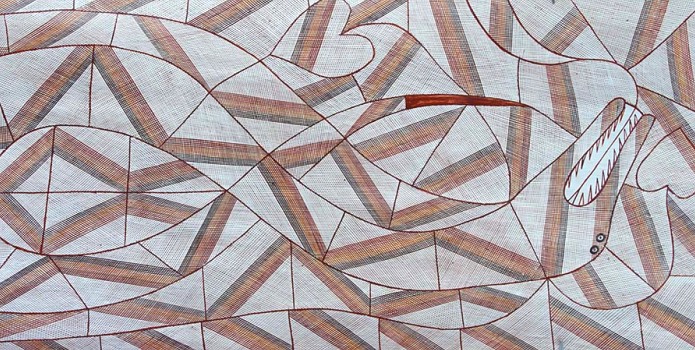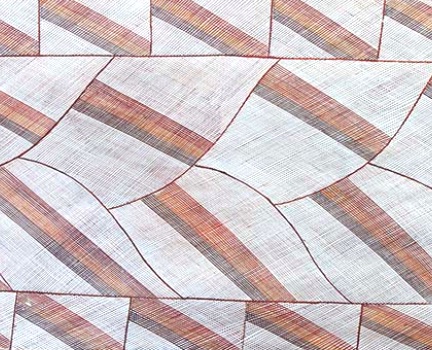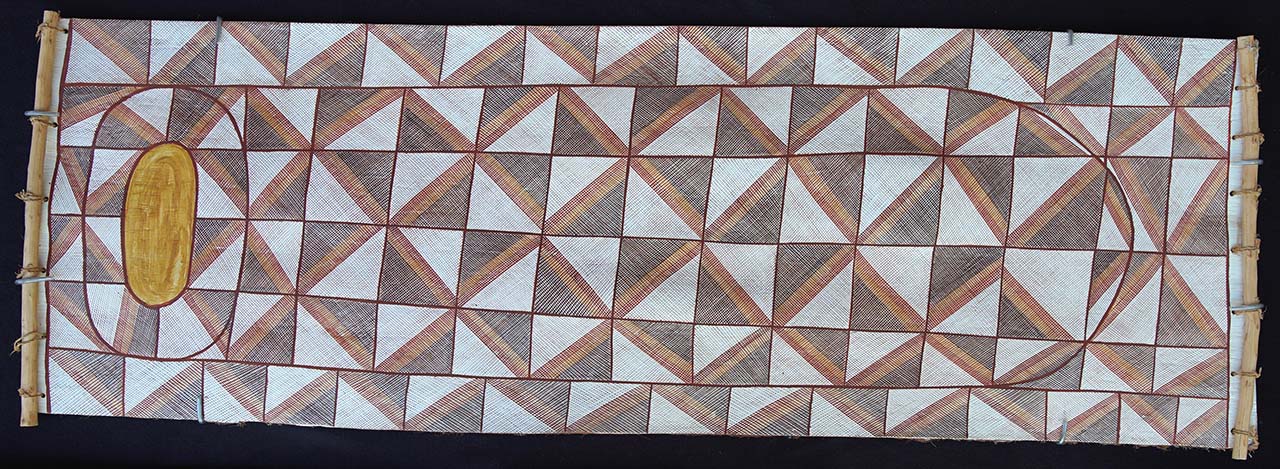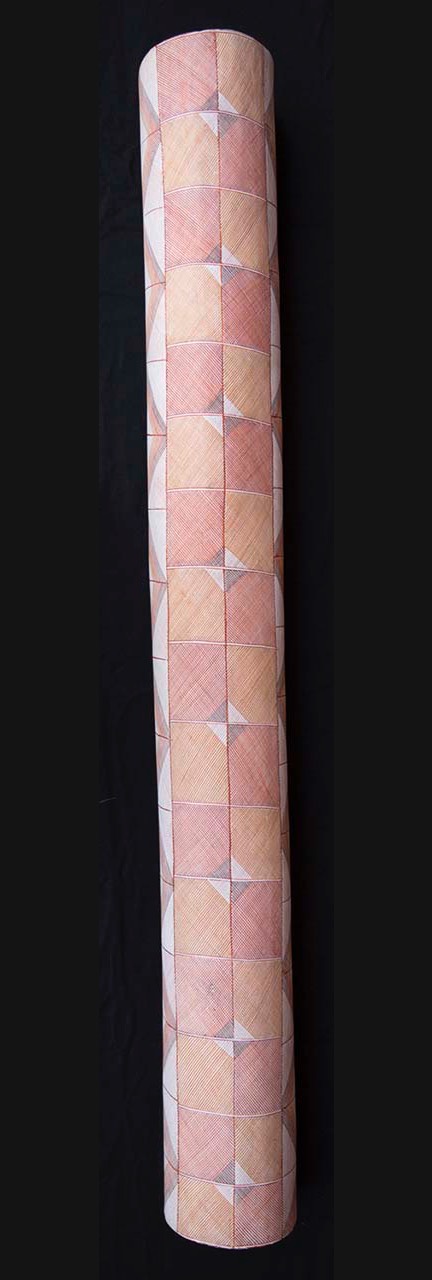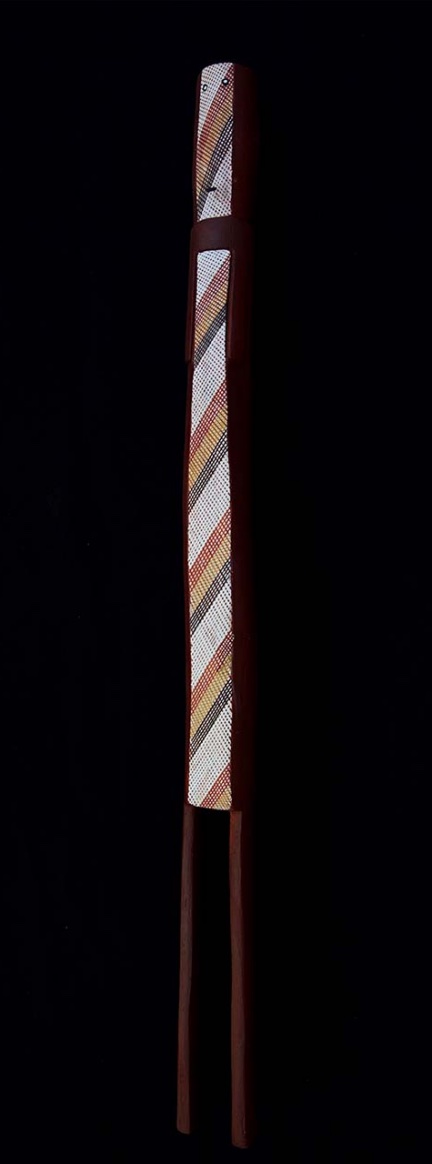Mimih Sticks, Lorrkons & Bark Paintings – Maningrida Dreaming
This is an interview with Hamish Garrgarrku (formerly Karrkarrhba) on the day of the opening of his first solo exhibition at Japingka Gallery, Fremantle.
Hamish is a Maningrida artist, growing up in Mumeka on the Mann River in West Arnhem Land. Hamish was guided in his art and learned his stories from famous aboriginal artists including John Mawurndjul, James Iyuna and Jimmy Njiminjuma.
This trip for his solo exhibition is his first visit to a city. Hamish is accompanied by his wife Jennifer Wurrkidj.
Q. Hamish welcome to Fremantle, you are certainly a long way from home.
Yes I’ve come a very long way. This is the first time I’ve come here and I’m here for my exhibition. It’s good to see it hung here in the gallery. To sit here in this place, to be telling the stories in this exhibition, it’s good. I’ve done a lot of work to bring down here. It’s all come from my heart. It feels really good - great - to be doing this job.
I’ve worked hard to put this work together, to tell these stories. These paintings are all about the dreaming. They are about the ancestors from my country.
Q. Are there particular animals that you are custodian of?
It's part of a story. Long ago when I was young and still growing to be a man I’d be with my Uncles James and John and grandfathers. These uncles were sons on my fathers side you know. I was just sitting down and they were teaching me. They’d be painting and teaching me the stories. They’d be painting and telling me the stories about how he died. They’d say this and this and this. They’d say, “if I die you can do this work”. So I was learning it.
They’d say go and grab that bark, bring it home to cut it up put it on the fire. Sometimes for three days, other times for two weeks. We’d put it on and get it to dry out so we could cut it up. Then we’d start painting again. Airing the bark is really hard.
Q. You use traditional ochre paints?
Yes we make it all. We start with dreaming, thinking then drawing and then we paint.
Q. Are there young people learning from you?
Yes they are interested. They come and sit down beside me and help me. They’ve started to see me when I’m painting. I tell them the stories.
Q. How often do you paint Hamish, every day?
Yeah, every day. Right up to three days ago. I sometimes work all day, working. For one day, two or three days at a time. I like this job.
Q. What do you want people to understand from your work.
These are stories, this one is about the waterhole, this one the yabbie. The yabbies come from holes under the water. Many of these works are about the yabbie and the waterhole and the rock. Others are about Dreaming stories to do with the waterhole and the stirred up yabbie holes. The yabbie, he'll be there all the time.
Q. Natalie is going to make a video all about you working for this exhibition. What do you want to happen with that video when its finished?
It’s for my family.
(Natalie Carey) We are going to try and get it on NITV as well. This film has been like a training exercise for quite a few people from Hamish’s family, the younger men. They’ve been coming out bush with us, doing all the filming and collecting most of the content themselves. So most of the filming has been done by the Bininj boys coming out bush. Hamish’s family have been doing the whole process.
Q. I understand that Aboriginal people of the rocky regions of western and south-western Arnhem Land tell of the existence of tall slender spirits which they call Mimih. Can Mimih’s speak? Can people understand them?
So the ones in my painting they don’t talk. They are in the rocks somewhere it is true. The Mimih is walking somewhere around. We don’t know. We’re not sure. Some see them in the bushes, some people see them when they are walking in a secret area somewhere.
(Natalie Carey) The spirit people can see them. Some people can see them and some people can’t.
Q. Are the Lorrkon (hollow coffin logs) still used in a traditional way?
Yes, a long time ago they were used for people who died. They were put in hollow logs for a long time. I remember that ceremony. The old people taught me about the ceremony in secret. I use the logs for a normal paintings now.
(Natalie Carey) Sometimes Lorrkon might be used for paintings about that traditional burial use. That’s not the case here. His hollow log paintings are about different Dreaming stories.
Q. Japingka Gallery are very happy to have your artworks in the gallery. Is this something you might be happy to do again?
Yes I would.
Q. Is there anything else about your work you want people to take away from your exhibition?
Yes I want them to feel good and think about the stories. These are my stories. So just then we were talking about the old use for the hollow logs. My paintings are the stories of a new generation that has come.
Read more:

